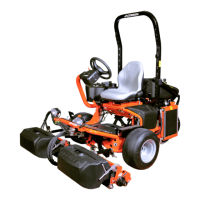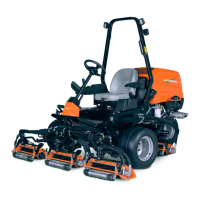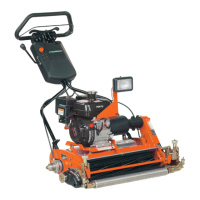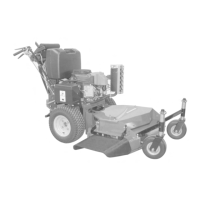HYDRAULICS
8O-53
STEERING CIRCUIT TEST
NOTE:
Check charge pressure before performing the
steering circuit test.
1. Shut down the engine.
2. Install a 2000-psi (13790 kPa) pressure gauge
and in-line tee between the steering unit outlet
and the supply hose, see Figure 8O-3.
3. Set the parking brake, start engine, and advance
engine speed to full throttle position.
4. Record the pressure gauge reading. The charge
pressure should be 850 to 1160 psi (372 to 7998
kPa), see Figure 8O-3.
Conclusion
• If relief valve opens within range, relief and steering
are not at fault.
• If relief pressure is not within range, relief valve
should be checked.
5. Shut down the engine and remove the ignition
key.
Relief Valve
NOTE:
The charge relief valve cannot be repaired or
adjusted. Replace if damaged or faulty
(Figure 8O-3).
6. Remove steering system relief valve plug, spring,
and cone. Inspect for sediment or debris and dam-
age. Clean or replace as necessary.
If the relief valve is not clogged or damaged:
7. Remove the hydraulic lines from the steering cyl-
inder. Cap the cylinder ports and plug the hydrau-
lic hoses.
8. Set the parking brake, start engine, and advance
engine speed to full throttle.
9. Slowly turn the steering wheel until 850 to 1160
psi (5860to 7998 Kpa) is indicated on the pres-
sure gauge.
If pressure is within range, the steering cylinder is
at fault. Repair or replace steering cylinder (see
Section 6D).
If pressure is not within range, the steering unit or
charge pump is at fault. Proceed with charge
pump flow test.
Figure 8O-3. Steering Circuit Test
Steering Unit
Outlet
Relief Valve
0 to 2000 psi (0
to 13790 kPa)
Gauge
Tee

